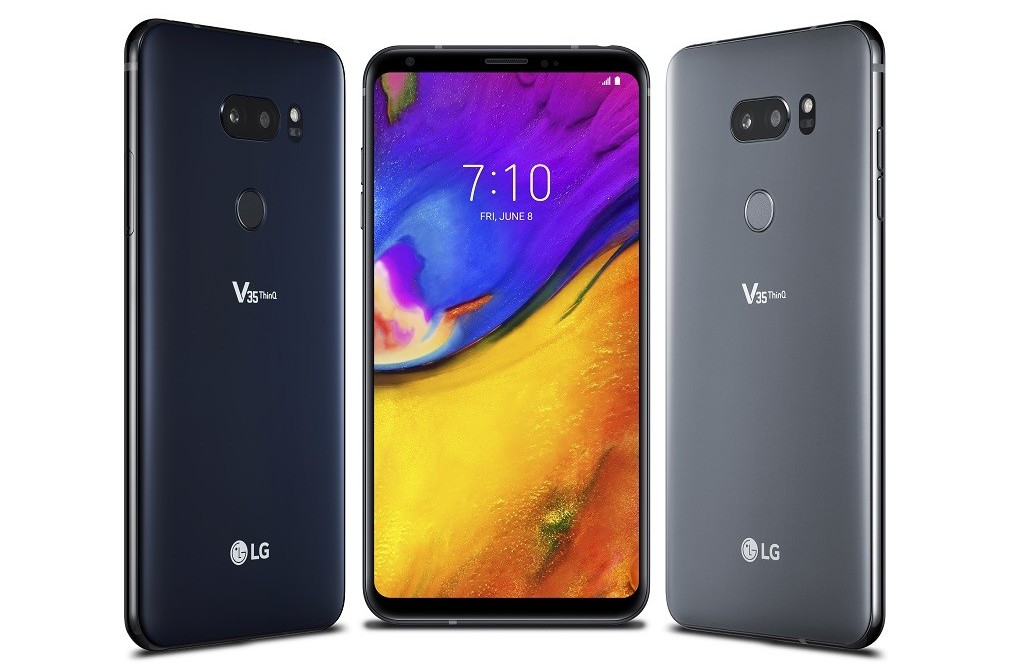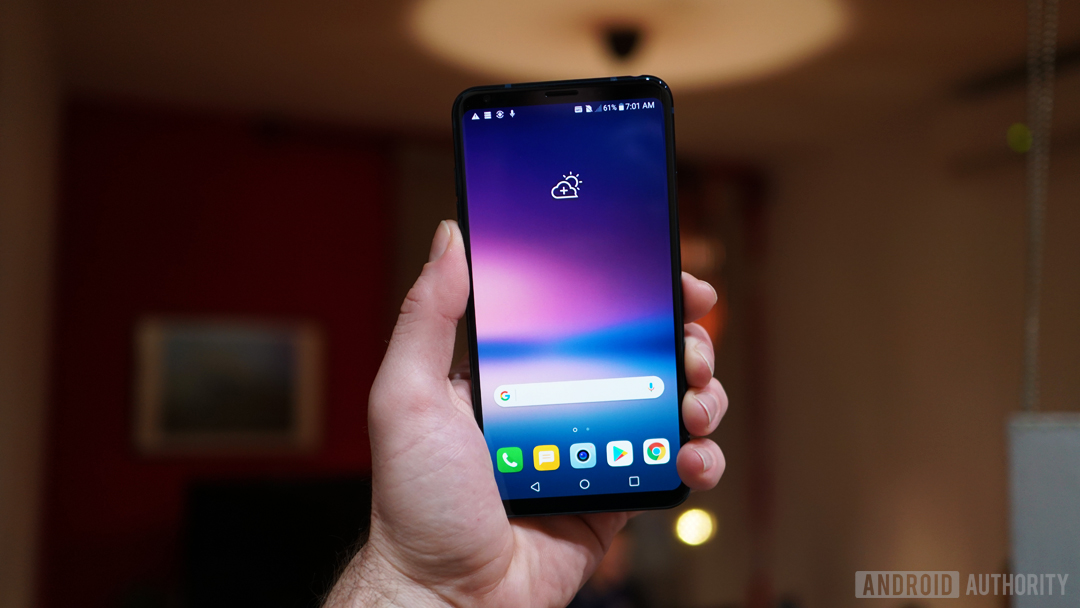LG unveiled two new phones at IFA, both sharing the name of the flagship G7, which debuted earlier in the year. The company’s first Android One phone is certainly an exciting prospect, but those hoping for an LG G7 with a more stock Android experience will be disappointed. LG isn’t going to be the new Nexus brand.
Despite appearances, there are a number of major differences between the LG G7 ThinQ and the LG G7 One and the G7 Fit. These mostly boil down to the camera and the processor, which also means different gaming, LTE, and Quick Charge capabilities. In a nutshell, you’re not getting quite the original LG G7 experience with these new models, though many of the hardware specs remain exactly the same.
 The LG G7 One is the highest powered Android One flagship on the market, but its older generation hardware and cut-down photography capabilities mean this shouldn’t be considered a flagship. Even the storage capacity is much more limited at just 32GB.
The LG G7 Fit is an even odder approach to branding. The phone features an even older quad-core Snapdragon 821 processor and offers yet another slightly different camera configuration. This is 2016-grade hardware slotted in under a 2018 brand name, and called “Fit” for some reason.
We have a few comparison points in the current market for this type of branding done right. The HTC U11 Life and its Android One version share exactly the same hardware and naming scheme. The only difference is the operating system. It’s the same with the Motorola Moto X4 — exactly the same hardware, just additional Android One branding on the relevant model.
LG's handset naming scheme for the new G7 series models feels impenetrable.
This branding scheme works, because the core hardware experience is the same in terms of performance and features. It’s just the software that changes based on the market. By comparison, LG is using the G7 brand to represent different tiers of hardware and software. Surely a dedicated brand name would’ve been better.
Companies have built Lite and Mini variants of flagship handsets forever, and at least it’s clear what consumers are buying. LG’s handset naming scheme for the new G7 series models feels impenetrable. At least in terms of the level of hardware on offer. The LG G7 Fit sounds more like a wearable than a phone.
Related Articles
The LG G7 One is the highest powered Android One flagship on the market, but its older generation hardware and cut-down photography capabilities mean this shouldn’t be considered a flagship. Even the storage capacity is much more limited at just 32GB.
The LG G7 Fit is an even odder approach to branding. The phone features an even older quad-core Snapdragon 821 processor and offers yet another slightly different camera configuration. This is 2016-grade hardware slotted in under a 2018 brand name, and called “Fit” for some reason.
We have a few comparison points in the current market for this type of branding done right. The HTC U11 Life and its Android One version share exactly the same hardware and naming scheme. The only difference is the operating system. It’s the same with the Motorola Moto X4 — exactly the same hardware, just additional Android One branding on the relevant model.
LG's handset naming scheme for the new G7 series models feels impenetrable.
This branding scheme works, because the core hardware experience is the same in terms of performance and features. It’s just the software that changes based on the market. By comparison, LG is using the G7 brand to represent different tiers of hardware and software. Surely a dedicated brand name would’ve been better.
Companies have built Lite and Mini variants of flagship handsets forever, and at least it’s clear what consumers are buying. LG’s handset naming scheme for the new G7 series models feels impenetrable. At least in terms of the level of hardware on offer. The LG G7 Fit sounds more like a wearable than a phone.
Related Articles New LG V35 ThinQ is a beefed-up version of the LG V30 ThinQ (Updated)
New LG V35 ThinQ is a beefed-up version of the LG V30 ThinQ (Updated) The LG V30S ThinQ is more expensive than the Galaxy S9 in South Korea
LG promised a shift in its mobile strategy this year, hinting at fewer models and bigger leaps between devices. The reality has been the opposite, with tiny tweaks and refreshes. First, the LG V30 underwent a few relaunches. Now the G7 portfolio is quickly spiraling into an even less comprehensible mess of specifications. These latest G7 variants are symptomatic of a wider product roadmap problem over at LG, and perhaps of its struggling sales situation too.
It’s reasonably cost-effective for the Korean manufacturer to reuse its inventories of cases and displays, and tweak smaller, cost sensitive components like the processor and memory with minimal assembly line refits. The G7 One and Fit probably have the same shell for this very reason. It’s a good quality shell, but what’s within and what it’s called make little sense. It could be only highly attractive pricing will make these devices stand out, but LG hasn’t even told us that yet.
The LG V30S ThinQ is more expensive than the Galaxy S9 in South Korea
LG promised a shift in its mobile strategy this year, hinting at fewer models and bigger leaps between devices. The reality has been the opposite, with tiny tweaks and refreshes. First, the LG V30 underwent a few relaunches. Now the G7 portfolio is quickly spiraling into an even less comprehensible mess of specifications. These latest G7 variants are symptomatic of a wider product roadmap problem over at LG, and perhaps of its struggling sales situation too.
It’s reasonably cost-effective for the Korean manufacturer to reuse its inventories of cases and displays, and tweak smaller, cost sensitive components like the processor and memory with minimal assembly line refits. The G7 One and Fit probably have the same shell for this very reason. It’s a good quality shell, but what’s within and what it’s called make little sense. It could be only highly attractive pricing will make these devices stand out, but LG hasn’t even told us that yet.
 As it is, the situation is more confusing for consumers than needed. The differences between most of LG’s recent smartphone releases aren’t obvious. While it might be cost-effective, this could end up being problematic for LG down the line, as consumers give up doing the research to tell the phones apart and simply opt for other phones with more intelligible branding. Something like the LG A7 or LG G7 Lite might have been better names.
As it is, the situation is more confusing for consumers than needed. The differences between most of LG’s recent smartphone releases aren’t obvious. While it might be cost-effective, this could end up being problematic for LG down the line, as consumers give up doing the research to tell the phones apart and simply opt for other phones with more intelligible branding. Something like the LG A7 or LG G7 Lite might have been better names.
source: https://www.androidauthority.com/lg-g7-one-fit-and-thinq-branding-mess-901184/
date: Sat, 08 Sep 2018 13:00:27 +0000
Comments
Post a Comment